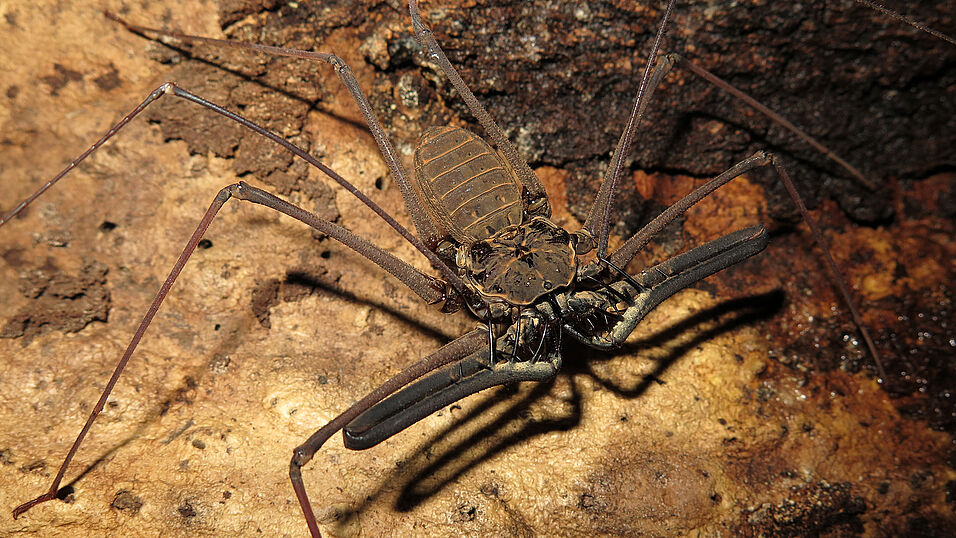Seiter M & Gredler R (2020)
Zoologischer Anzeiger 287 (2020) 1e13, doi.org/10.1016/j.jcz.2020.05.001 Link. published online 11.5.2020
Abstract
Whip spiders (Amblypygi) are a group of terrestrial arachnids that exhibit fascinating and unique behavioral habits. The genus Heterophrynus has a wide distribution in South America and since most of the species are morphologically (gross morphology) highly similar to each other there is a strong need of revision. To this purpose, we studied the spermatophore morphology, reproductive behavior and the detailed structure of the reproductive organs in selected members of the genus and evaluate the usefulness of this information for species discrimination. According to our investigation and data from the literature, the reproductive behavior of the observed species are, in most aspects, remarkably similar. Minor differences exist in specific behavioral patterns. The overall behavior is simpler than that in other whip spider genera since it lacks the numerous phases and behavioral patterns they exhibit. The most reliable difference among the concerned species involves the action of the male to modify the spermatophore head with the chelicera before the female takes up the sperm mass. The general schema of the entire spermatophore is quite similar within the genus Heterophrynus, but differences are apparent between the two proposed groups. For example, the sperm package carrier is either plate-like or curved oblong, and the entire sperm mass has different locations. However, the reproductive organs provide among the most reliable characters for distinct species discrimination, since they are formed by variously shaped lobes. Others are the ventral pedipalp spination groups and the ratio between pedipalp tibia length and carapace width. We thus strongly recommend the inclusion of these aspects and especially a detailed description of the reproductive organs in taxonomic works. In addition, a species from Columbia is described as new to science.

